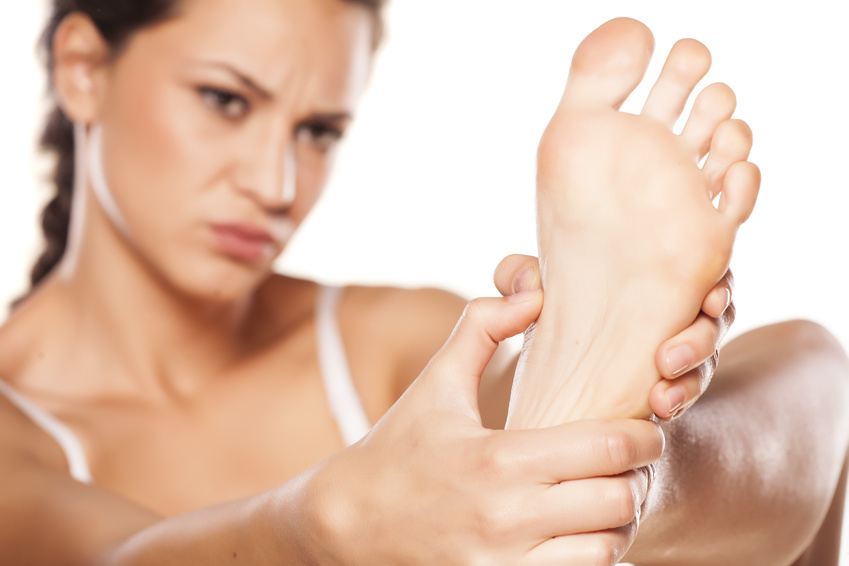
What Chronic Heel Pain Has to Do With Your Arches
 We’ve all had sore feet after a long day standing, a night out dancing, or wearing shoes that don’t fit properly. Usually taking the weight off them, getting rid of our shoes, or a good night’s rest resolves the issue. But for some people, chronic pain—especially chronic heel pain—is an everyday problem. Chronic heel pain can take a serious toll on your quality of life. Anything that involves standing becomes painful, walking can be excruciating, and exercise is out of the question. Just sitting at your desk can be uncomfortable.
We’ve all had sore feet after a long day standing, a night out dancing, or wearing shoes that don’t fit properly. Usually taking the weight off them, getting rid of our shoes, or a good night’s rest resolves the issue. But for some people, chronic pain—especially chronic heel pain—is an everyday problem. Chronic heel pain can take a serious toll on your quality of life. Anything that involves standing becomes painful, walking can be excruciating, and exercise is out of the question. Just sitting at your desk can be uncomfortable.
There are several conditions or types of injuries that can cause chronic heel pain, and while many people jump to the conclusion that chronic heel pain must mean they have bone spurs, the most common cause is actually plantar fasciitis. This is a condition in which the plantar fascia, a band of connective tissue in the sole of the foot, becomes irritated and inflamed, causing pain. Here’s an overview of the condition, its symptoms and treatment options from NY-based orthopedic foot and ankle surgeon, Dr. Stuart Katchis.
What causes plantar fasciitis?
The plantar fascia is a thick band of connective tissue that runs from your heel bone to the pads of your toes. It’s part of your body’s built-in shock absorber system, and when it experiences too much stress and strain, it can develop microscopic injuries which cause inflammation and pain—especially in the heel. This condition is called plantar (sole of the foot) fasciitis (inflammation of the fascia) and it’s extremely common. Many factors can contribute to it, from walking on hard surfaces like tile and concrete, to poor shoe choices.
Foot structure often plays a role in developing plantar fasciitis. The plantar fascia is one of the components which make up the arch of your foot, and abnormal foot structure can put undue stress on it. People with high arches or flat feet are especially prone to plantar fasciitis.
Plantar Fasciitis Symptoms
Plantar fasciitis usually comes on gradually and gets progressively worse over weeks or months. The most common symptom is chronic pain in the bottom of your heel, but you may also have pain in other parts of your feet including your arch. In some cases, the entire sole of your foot may hurt. Your foot may also be stiff, especially when you first get up.
One of the hallmarks of plantar fasciitis is that the pain is usually worse when you first wake up, or upon standing after you’ve been off of your feet for a long time. Usually, the pain decreases somewhat after you’ve been on your feet for a while, as the fascia softens and stretches with use. However, long periods of standing or walking tend to make the pain worse.
Treatment Options for Plantar Fasciitis
Most cases of plantar fasciitis can be successfully treated without surgery, though complete recovery can take up to several months. Conservative treatments including rest, ice, and anti-inflammatory medications are often prescribed. You may need to change the type of shoes you wear; non-supportive shoes aggravate plantar fasciitis and high heels must be avoided. Orthotics—shoe inserts which change your foot mechanics and how your shoes fit—may also be recommended.
Plantar fasciitis treatment usually involves a stretching program, and in some cases physical therapy may be an option. A night splint, which keeps the fascia in a stretched position during sleep, can be helpful. In severe cases, cortisone injections may provide some pain relief as the tissues heal. Conservative treatment usually resolves plantar fasciitis within a few months, and it is only in rare cases that surgery may be necessary.
Treatment for Chronic Heel Pain in NY
Although plantar fasciitis can be successfully treated at any point, the best time to seek treatment is when you first notice symptoms—the earlier you seek treatment the quicker your recovery will be.
Don’t let chronic heel pain keep you off your feet. If you are experiencing any symptoms of plantar fasciitis, fill out the schedule form on this page or contact our office today for a consultation.



You must be logged in to post a comment.